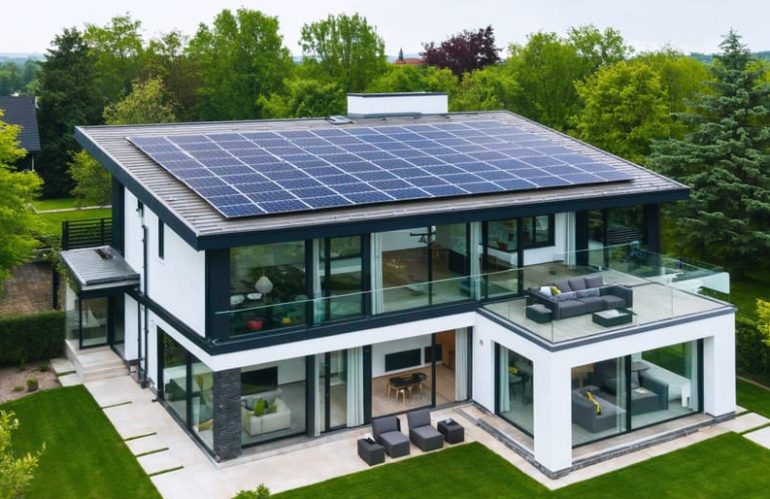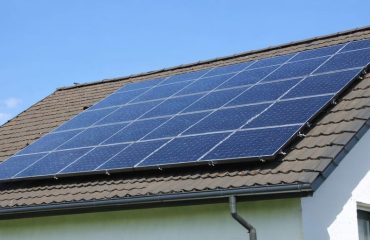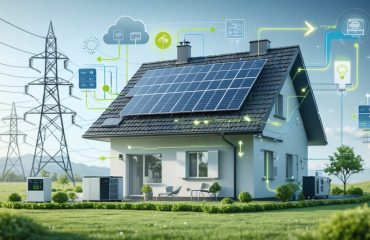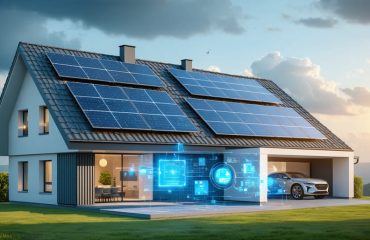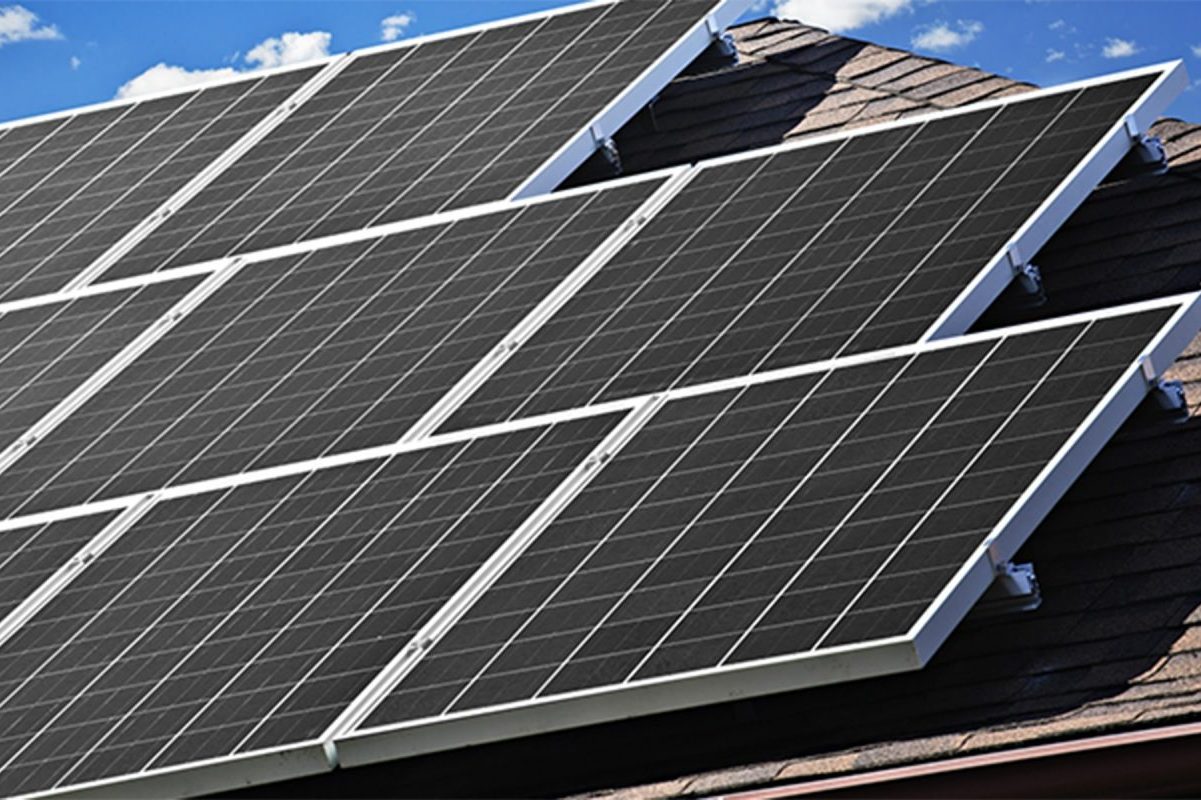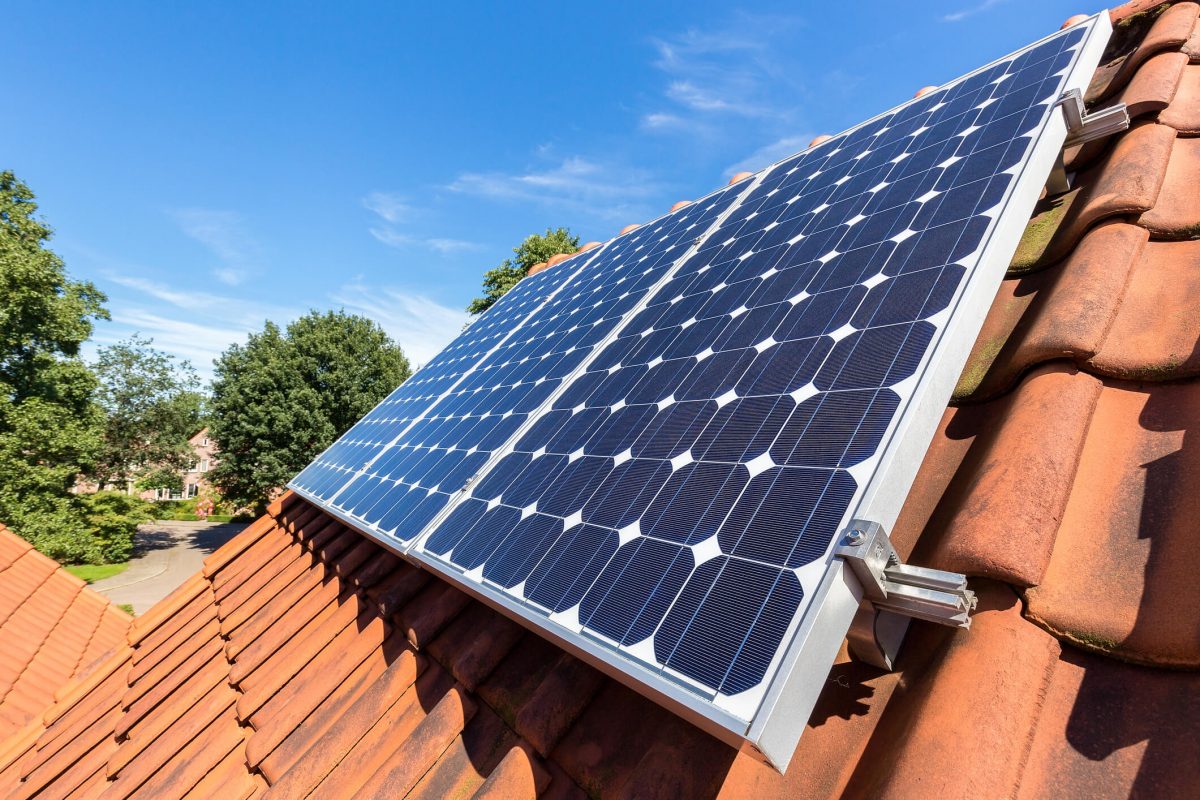Imagine your building as an active participant in the future of energy – not just consuming power, but dynamically interacting with the electrical grid to create a more sustainable and cost-effective energy system. Grid interactive buildings represent the next evolution in smart architecture, combining advanced automation, renewable energy systems, and real-time grid communication to optimize energy use and reduce costs.
These intelligent structures automatically adjust their energy consumption based on grid conditions, electricity prices, and weather patterns. During peak demand periods, they can reduce their power draw or even feed excess energy back to the grid, helping stabilize the electrical network while saving building owners money. When electricity is abundant and cheap, they store energy for later use.
For homeowners and businesses alike, grid interactive buildings offer a compelling solution to rising energy costs and environmental concerns. By transforming passive structures into responsive energy partners, this technology is reshaping how we think about buildings’ role in our energy future.
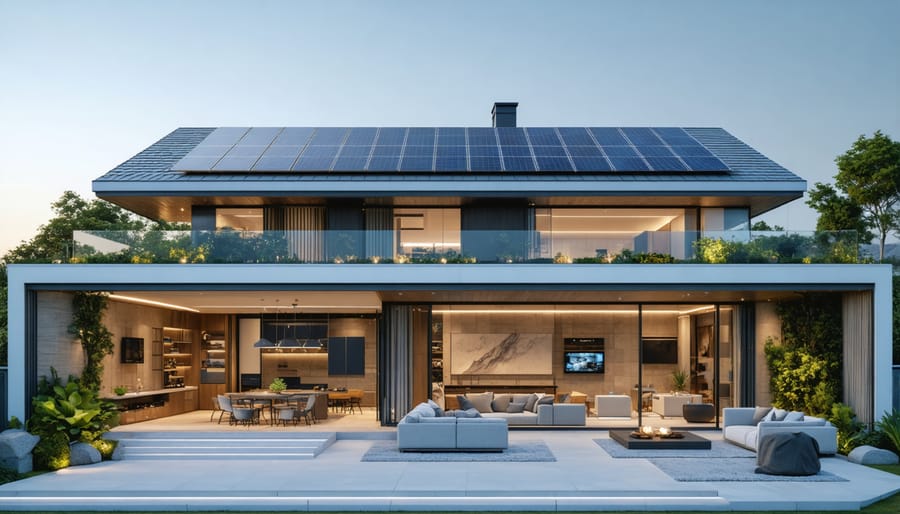
How Grid Interactive Buildings Work With Your Solar System
Real-Time Energy Management
Real-time energy management in grid interactive buildings works like an intelligent conductor, orchestrating your home’s energy use to match grid conditions. Through advanced smart home integration, your building can automatically adjust its energy consumption based on various factors such as electricity prices, grid demand, and renewable energy availability.
When demand on the grid is high, your home can automatically reduce its energy usage by dimming lights, adjusting thermostats, or temporarily pausing non-essential appliances. Conversely, during periods of abundant renewable energy or lower grid demand, your home can increase its energy consumption for tasks like charging electric vehicles or running the dishwasher.
This dynamic response system helps balance grid load while saving you money. For example, your water heater might heat up when solar energy is plentiful during midday, storing that thermal energy for evening use. Your home can even earn credits or incentives by participating in utility demand response programs, turning energy management into a source of savings rather than just an expense.
Smart Storage Solutions
Modern home battery storage systems are the backbone of grid interactive buildings, acting like a sophisticated energy savings account. These intelligent batteries store excess power during off-peak hours when electricity is cheaper and discharge it during peak times when rates are highest, helping homeowners maximize their energy savings.
Today’s smart storage solutions go beyond simple power backup. They can learn your household’s energy patterns, predict usage needs, and automatically adjust charging cycles to optimize both cost savings and grid support. When paired with solar panels, these systems become even more valuable, storing clean energy for use after sunset or during cloudy days.
The latest battery technologies also include features like weather forecasting integration, which helps prepare for upcoming high-demand periods, and smart power management that ensures you always have enough stored energy for essential needs while still supporting grid stability. This intelligent approach to energy storage not only reduces your electricity bills but also helps create a more resilient and sustainable power grid for everyone.

Financial Benefits of Grid Interactive Homes
Peak Hour Savings
Grid interactive buildings excel at managing energy costs during peak hours when electricity rates soar. Through sophisticated automation systems, these buildings can automatically reduce power consumption during high-rate periods, typically occurring in late afternoons and early evenings.
The building’s smart systems monitor real-time electricity prices and adjust accordingly. When rates spike, the system can automatically dim non-essential lighting, adjust thermostats by a few degrees, and temporarily reduce power to certain appliances. These minor adjustments, barely noticeable to occupants, can lead to significant cost savings.
For example, during a summer peak rate period, the system might pre-cool the building in the morning when rates are lower, then reduce air conditioning usage during expensive afternoon hours. Similarly, energy-intensive tasks like charging electric vehicles or running the dishwasher can be scheduled for off-peak hours when electricity is cheaper.
Many utilities offer time-of-use rate programs that reward this kind of smart energy management, allowing homeowners to save up to 30% on their monthly energy bills through strategic peak hour management.
Utility Rebates and Programs
Many utility companies now offer attractive incentives for homeowners who implement grid-interactive systems. These rebates and programs can significantly reduce the initial investment costs while providing ongoing benefits. Common incentives include direct cash rebates for installing smart thermostats, battery storage systems, and other grid-interactive equipment.
Time-of-use rate programs are particularly valuable, allowing homeowners to save money by shifting their energy usage to off-peak hours when electricity rates are lower. Some utilities offer demand response programs that pay participants for reducing their energy consumption during peak periods or grid stress events.
Several states also provide tax credits and incentives for grid-interactive technology installations. These can include property tax exemptions, sales tax waivers, and performance-based incentives that reward energy-efficient behaviors. Additionally, some utilities partner with manufacturers to offer discounted prices on smart home devices and energy management systems.
To maximize available benefits, contact your local utility provider to learn about specific programs in your area. Many utilities also offer free energy audits to help identify the most cost-effective grid-interactive upgrades for your home.
Making Your Home Grid Interactive Ready
Essential Equipment
To make a building grid-interactive, several key components work together to create a smart, responsive energy system. At the core is an advanced building management system (BMS) that serves as the brain of the operation, monitoring and controlling energy usage in real-time.
Smart electrical panel upgrades are essential to enable two-way power flow and detailed energy monitoring. These panels work alongside smart meters that communicate with the utility grid and track energy consumption patterns.
Energy storage systems, typically in the form of batteries, are crucial for storing excess power and providing backup during peak demand periods. Solar panels or other renewable energy sources often complement the system, generating clean energy that can be used, stored, or sent back to the grid.
Smart thermostats and automated controls for major appliances allow for intelligent load management. These devices can automatically adjust their operation based on grid signals and energy prices. Internet connectivity and secure communication protocols ensure smooth data exchange between your building and the utility provider.
Finally, a user-friendly interface or mobile app helps homeowners monitor their energy usage, set preferences, and track savings. This combination of equipment creates a responsive system that optimizes energy use while maintaining comfort and convenience.
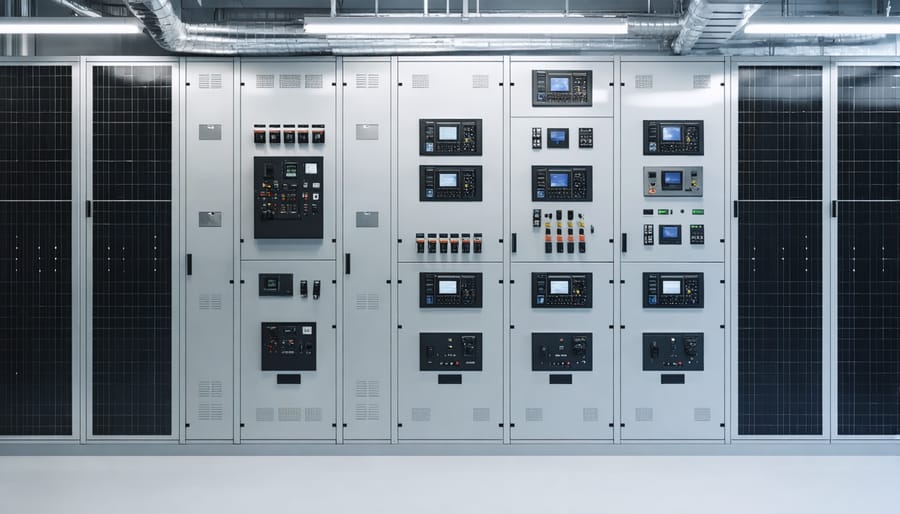
Integration with Existing Solar
If you already have a solar installation, upgrading to grid interactivity is simpler than you might think. The key component you’ll need is a smart inverter, which can replace your existing inverter or work alongside it. These modern inverters enable two-way communication between your solar system and the power grid, allowing for more efficient energy management.
Many solar installations from the past five years already have smart inverter capabilities that just need to be activated. Check your inverter’s model number or consult with your solar installer to determine if your system is ready for an upgrade. If you have an older system, replacing the inverter is typically straightforward and can be completed in a day.
Adding a home battery system is another valuable upgrade that enhances grid interactivity. Batteries store excess solar power and can be programmed to discharge during peak demand periods, maximizing your energy savings. Modern battery systems come with smart controllers that automatically optimize power flow based on grid conditions and your household needs.
Smart meters are essential for grid interactivity and are often provided free by utility companies. These devices enable real-time monitoring of your energy production and consumption, helping you make informed decisions about when to use power. Contact your utility provider to check if you’re eligible for a free smart meter upgrade and to learn about available incentives for grid-interactive solar systems.
Grid interactive buildings represent a significant step forward in our journey toward a more sustainable and energy-efficient future. By combining smart technology, renewable energy systems, and automated demand response capabilities, these buildings offer homeowners unprecedented control over their energy usage while contributing to a more resilient power grid.
The benefits are clear and compelling: lower energy bills through optimized consumption, reduced environmental impact, increased home value, and the satisfaction of contributing to a more sustainable community. Grid interactive buildings also provide protection against power outages and price fluctuations, offering peace of mind in an increasingly unpredictable energy landscape.
As our power infrastructure continues to evolve, grid interactive buildings will become increasingly valuable. The technology is already available, proven, and becoming more affordable each year. Whether you’re building a new home or upgrading an existing one, implementing grid interactive features can be done gradually, allowing you to scale up as your needs and budget allow.
The time to act is now. By embracing grid interactive technology, you’re not just investing in your home; you’re investing in a cleaner, more efficient future. Start by consulting with local energy experts to assess your home’s potential and develop a personalized implementation plan. Every smart energy decision you make today brings us one step closer to a more sustainable tomorrow.

